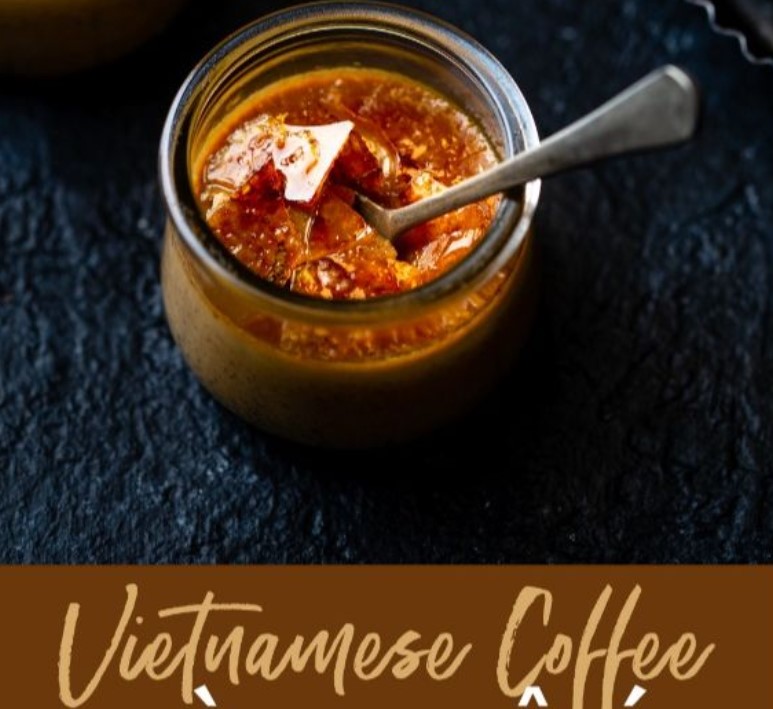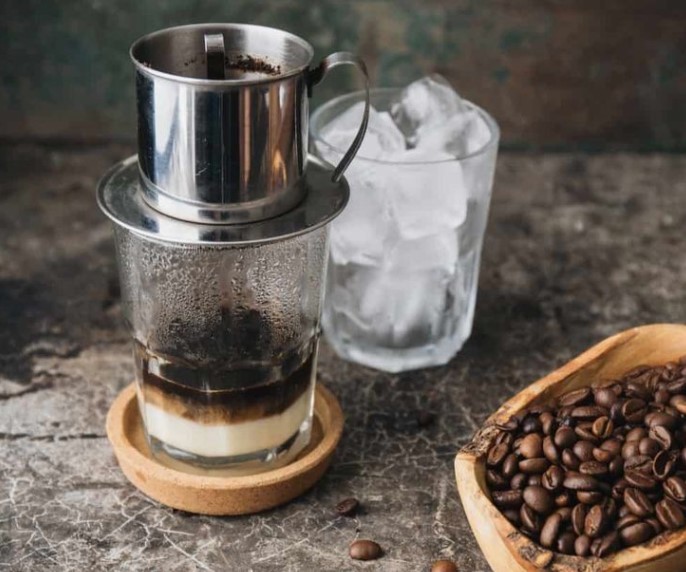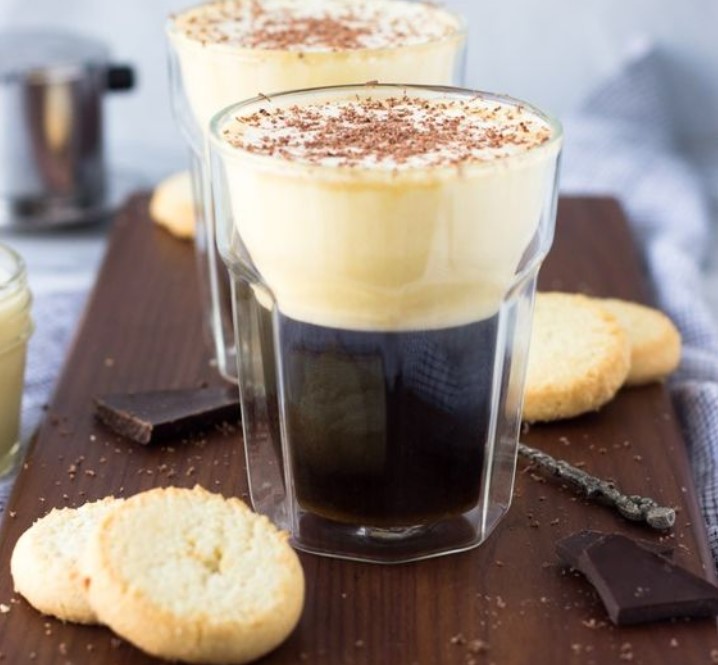
Hey there, coffee lovers! It’s Nancy here, your friendly neighborhood coffee enthusiast. Today, I’m diving into the world of Vietnamese coffee—a topic that’s as intriguing as it is caffeinated. Vietnamese coffee has a special place in my heart, not just for its unique flavors, but also for the delightful stories that come with each cup. So grab your favorite mug and let’s explore just how much caffeine in Vietnamese coffee!
What is Vietnamese Coffee?
Vietnamese coffee is not just a drink; it is already an iconic national beverage. I remember my first trip to Vietnam. I first tried Ca Phe Sua Da at a busy cafe in Hanoi. The cafe was filled with the chatter of locals, and the air was filled with the aroma of coffee. I didn’t want to try a traditional latte but was determined to try something local and colorful. The waiter said that this coffee, introduced by the French in the 19th century, quickly became an important drink in Vietnam, developing into a unique tradition.
A nice and kind guy brought me a glass with a thick layer of sweetened condensed milk at the bottom, and on top was a metal rod from which coffee was slowly dripping. The anticipation grew as I watched each drop fall. The mixing of the layers created a beautiful whirlpool; there was simply magic happening in my glass that even my iPhone camera could not capture. The drink was sweet, strong, and refreshing – perfect for a hot and humid day.
Why condensed milk and not regular milk, you ask? I was also interested in this, and the waiter told me that there had previously been a shortage of fresh milk in Vietnam. And this is how milk yield was saved by making a lot of condensed milk, which was added where possible instead of regular milk. This is how this wonderful, strong drink turned out.

Types of Vietnamese Coffee
During my stay in Vietnam, I learned that there are already 3 types of this drink, and of course I had to try them. For myself, I highlighted such a difference in them.
| Vietnamese Coffee | Main Components | Secrets | Strength |
|---|---|---|---|
| Ca Phe Sua Da (Vietnamese iced coffee) | Coffee, sweetened condensed milk, ice | Use high-quality sweetened condensed milk for best taste | Medium to Strong |
| Ca Phe Trung (Vietnamese Egg Coffee) | Coffee, whipped egg yolk, sweetened condensed milk | Whip egg yolk thoroughly until creamy and fluffy | Medium to Strong |
| Ca Phe Den | Coffee (black) | Brew slowly to enhance flavor | Very Strong |
Nutritionists often recommend limiting caffeine intake to about 400 mg per day, which equates to about two to three cups of Vietnamese coffee.
Traditional Brewing Methods Of Vietnamese coffee
Vietnamese coffee is typically brewed using a phin, a small metal drip filter that sits atop your cup. It’s a slow process, allowing you to savor the anticipation as each drip promises a bold and robust flavor.

Vietnamese coffee
Equipment
- 1 phin
- 1 cup
Ingredients
- 2 tbsp coarse coffee grounds
- 1 cup hot coffee
- 2 tbsp sweetened condensed milk
Instructions
- Pour the sweetened condensed milk into a glass.
- Add the coffee grounds to the phin filter.
- Place the phin filter over the glass.
- Pour a small amount of hot water (about 1-2 tablespoons) over the grounds to bloom the coffee, allowing it to expand and release gases.
- After 30 seconds, fill the phin with hot water and cover it with the lid. Wait for the coffee to drip through, which takes about 4-5 minutes.
- Now you can taste strong coffee with a final sweet and milky aftertaste.
How much caffeine in Vietnamese coffee: Comparison With Other Types
To understand Vietnamese coffee’s caffeine content, let’s compare it with other popular types of coffee.
| Coffee Type | Caffeine Content (mg per 8 oz) | Flavor Intensity |
|---|---|---|
| Drip Coffee | 95 | Moderate |
| Espresso | 63 (per 1 oz shot) | Very Strong |
| Vietnamese Coffee | 100-165 | Strong and Bold |
| Cold Brew | 200 | Smooth and Strong |

How Strong is Vietnamese CoffeeFactors Affecting Caffeine Levels
Several factors influence the caffeine content in your cup of Vietnamese coffee:
| Aspect | Description | Numbers/Proportions |
|---|---|---|
| Bean Type and Roast Level | Robusta beans, commonly used in Vietnamese coffee, contain approximately twice the caffeine of Arabica beans. | Robusta contains about 2.2% caffeine, while Arabica contains about 1.1%. |
| Brewing Method | The phin filter allows for a slower extraction, resulting in a stronger, more concentrated coffee. | Slower extraction can increase caffeine content. |
| Serving Size | A typical serving is often larger than a standard espresso shot, contributing to higher caffeine content. | Typical serving size of Vietnamese coffee is around 8 ounces (250 ml). |
| Ratio of Coffee to Water | A higher coffee-to-water ratio means a stronger brew. | Recommended coffee-to-water ratio for phin filter can be 1:10 or more concentrated. |
As we passed by an authentic coffee shop, the guide said that they make the best coffee here, similar to an egg liquid dessert. I remember back then I shuddered, because a runny egg didn’t look appetizing to me. But when I woke up the next morning, I realized that I wanted to try, because being in Vietnam and not trying everything national. Why then all this?
And after talking with the barista in the cafe, I made up my mind, but said that I wanted to watch how it happens. He smiled, but did not contradict, he was probably used to tourists with strange proposals and questions.
He started by brewing a strong cup of Vietnamese coffee using a traditional phin filter. All processes were exactly as I described above in the recipe.
While the coffee was brewing, the barista prepared the egg mixture. He cracked an egg and carefully separated the yolk from the white, placing the yolk in a bowl. He then added two tablespoons of sweetened condensed milk and a teaspoon of sugar. With a handheld mixer, he whipped the mixture until it became thick and frothy, resembling a custard.
Once the coffee was ready, he poured it into a cup and gently spooned the whipped egg mixture over the top. The creamy foam floated on the surface, creating a beautiful, layered effect. As I took my first sip, I was amazed. The combination of strong coffee and the rich, velvety egg foam was like drinking a liquid custard with a hint of coffee.

This experience not only changed my perception of coffee but also introduced me to the rich culinary traditions of Vietnam. Ca Phe Trung has since become one of my favorite coffee treats, a delightful reminder of my adventures in Hanoi.
While the high caffeine content can give you a much-needed energy boost, it’s important to consume it responsibly. Too much caffeine can lead to jitters, insomnia, and increased heart rate. Moderation is key. Enjoy your Vietnamese coffee, but maybe not right before bed!
FAQs
How much caffeine is in a typical cup of Vietnamese coffee?
A typical 8-ounce cup of Vietnamese coffee contains between 100-165 mg of caffeine.
Is Vietnamese coffee stronger than espresso?
In terms of caffeine content per serving, yes, it can be. However, espresso has a more concentrated flavor.
Can you reduce the caffeine content in Vietnamese coffee?
You can use a blend of Arabica and Robusta beans to lower the caffeine content, or simply use less coffee when brewing.
Conclusion
Vietnamese coffee is a fascinating brew that offers a unique combination of high caffeine content and rich, bold flavor. Whether you’re a fan of the sweet, creamy Ca Phe Sua Da or the dessert-like Ca Phe Trung, there’s a Vietnamese coffee for everyone. So next time you need a caffeine kick, give Vietnamese coffee a try—you won’t be disappointed. And don’t forget to share your experiences in the comments below!

Hello, coffee enthusiasts! I’m Nancy Gregory, a seasoned coffee sommelier eager to share the exquisite world of coffee with you. I love coffee with every fiber of my soul and I know a lot of interesting information about beans and coffee brewing methods that I want to share with you.